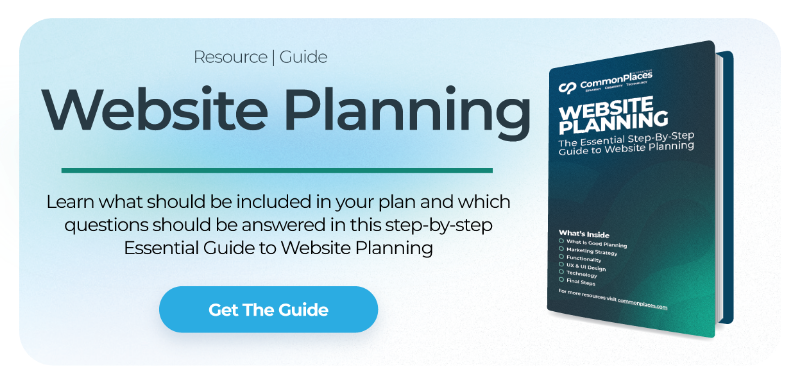In today’s digital landscape, having a website is essential for businesses. Whether building anew or redesigning an existing one, the million-dollar question: ‘What’s the cost?’ is always asked.
It’s smart to understand the costs associated with web development before partnering with an agency and diving into the process. Below we explore various factors that will impact your next web project’s total cost, so you can make informed and strategic decision-making aligned with your requirements.
Why Is It So Difficult To Find A Price List On An Agency’s Website?
When conducting research for a new product, one of the first pages visited is the ‘Pricing’ page. Most development agencies do not make their pricing publicly available, so chances are you will end your search frustrated and empty-handed. This is for a variety of reasons, the most important being that your website needs are very unique to you and your brand.
Offering up a quote or estimated cost without understanding the technical details of your project could set false expectations and then build mistrust once the initial discovery is completed and a solution is proposed. A good development partner will want to provide you with an estimate that is as accurate as possible, based on their understanding of the project in front of them. If you are given pricing before reviewing your requirements with someone, pay special attention to what is included in that price and identify potential areas that might incur additional costs.
Top Factors
After identifying a promising agency, they’ll seek insights into your vision, goals, needs, and technical capabilities to provide a project quote. Clear communication about your priorities in the following areas ensures productive initial discussions and alignment for budget decisions.
Features and Functionality
Evaluating the cost of your development project hinges on its intended functionality. This shapes the technology used and the extent of customization required to bring your vision to life. Enhanced features like third-party integrations, membership systems, chatbots, social media, and video integration increase costs.
Pro Tip
Before contacting a development partner, research your organization’s website usage, desired features, tools, and customer touchpoints by mapping out the Customer Journey. This holistic view will guide your project priorities.
Open Source v Proprietary Software
With so many Content Management Systems (CMS) available, choosing which one is best for your project can be overwhelming. There two main types of CMS platforms to consider, Open Source and Proprietary.
- Open Source Software is free to the public to download and use on their site, but the labor and upgrades can be costly.
- Proprietary Software is owned and maintained by a company and you pay licensing fees to have access to their product, and many times includes necessary scheduled updates.
Pro Tip
There is a possibility that your project will need a mixture of both to complete your technology stack, talk to your development partner to determine the best route for your business.
Custom or Template Design
Your website’s design plays a pivotal role in branding and influencing customer experiences. Opting for a custom design rather than a pre-built template can significantly impact your project’s cost. A unique design sets you apart, enhancing user engagement. While it requires more time and expertise, investing in a custom design aligns with your business goals. Statistics show that businesses using customized designs experience a 32% increase in user engagement.
If budget constraints are a concern, using a pre-built template or theme could be a more practical choice. Choose the option that aligns with your resources and goals.
Hourly v Fixed Cost
We cannot discuss setting the right budget for your company without mentioning the difference between an hourly-based project and a fixed-price project. Each pricing structure has benefits and drawbacks, it’s good to understand what these are before making your decision.
A fixed-cost project guarantees a predetermined cost and scope, ensuring budget predictability and transparency. This pricing model is ideal for smaller, well-defined projects and enables accurate budget planning. However, fixed scope restricts changes, potentially leading to additional costs and schedule delays.
Hourly projects involve paying for the time invested in the project, providing room for adjustments and additions to the scope. While refining project scope is possible, diligent progress tracking ensures cost and expectations alignment. This approach suits larger projects needing agility for features, integrations, and custom functionality.
Hourly Rates: Average Cost and Factors
Because we KNOW you want actual numbers, we will provide this with a grain of salt: Web development is a skilled trade involving expertise in tools and programming languages. Hourly rates for web developers can vary, ranging between $120 and $250+*, contingent on technology, infrastructure, reputation, location, and agency expertise.
*These rates are for a reputable custom development agency based in the US.
Accessibility & Compliance
Compliance standards such as ADA, GDPR, and HIPAA are an essential aspect of designing a website that is accessible, secure, and legally compliant. Visitors are more likely to trust a site or portal that is accessible to all and guarantees their user data is protected, (PHI) is secured. It’s the recipe for the Ultimate Customer Experience.
While agencies prioritize compliance, ensuring it requires added time and resources. Compliance testing via third-party specialists can lead to higher hourly rates. The upfront cost of compliance is an investment with long-term value.
Website Size
Whether you like to admit it or not, size does matter, especially when it comes to estimating the cost to plan, design, and build out each section of your website. Conduct a comprehensive content audit to grasp the site’s breadth. Assess existing pages and content categories, including blogs, events, products, forms, forums, dashboards, team pages, and general information. Decide which elements should be migrated, updated, removed, or newly created. Structured content and data migration might be necessary for a larger site, or you can consider building and migrating on your timeline for cost-effectiveness. After the audit, address content rewriting or creation, which can include SEO services affecting the budget if needed.
Thinking Long Term: Hosting, Maintenance, and Ongoing Support
When determining your budget for a new Project, make sure to consider future costs. Your site or portal will need to be hosted on a trusted server with regular backups being stored. Continued maintenance should be factored in so you can be certain to keep your website secure and running at its greatest potential in the rapidly changing online world. Lastly, factor in some cost for site changes and ongoing support requests when planning an annual budget.
Pro Tip
A reputable web developer will not simply deliver a website as a one-and-done. When choosing an agency, talk to them about their offerings to support your project after launch.
Define Your Needs and Priorities
The cost of a website project depends on various factors, such as website design, functionality, content creation, hosting and maintenance, timeframe, experience, and location. To determine the cost of a website project, it is crucial to understand these factors and work with a web development team to create a comprehensive and accurate budget. With careful planning and execution, a website can be a valuable investment for any business.




